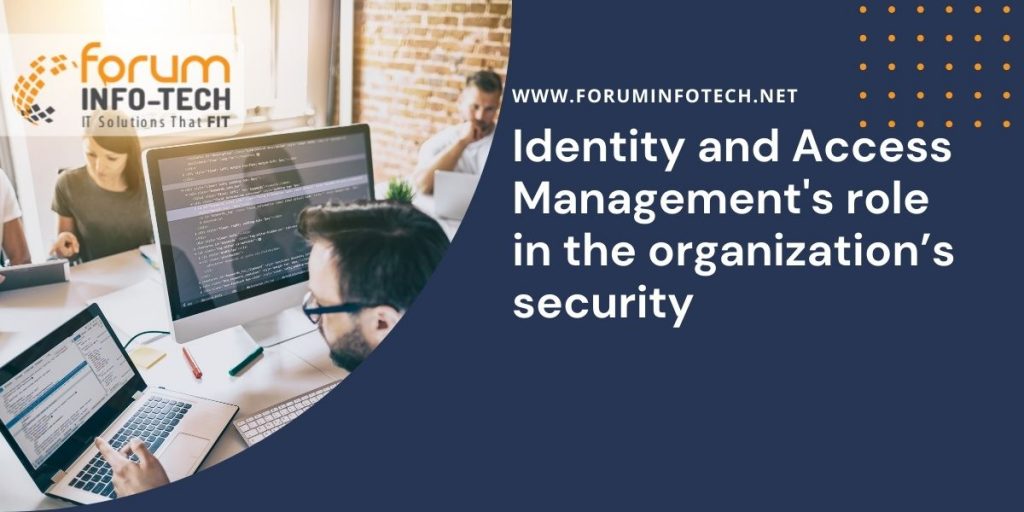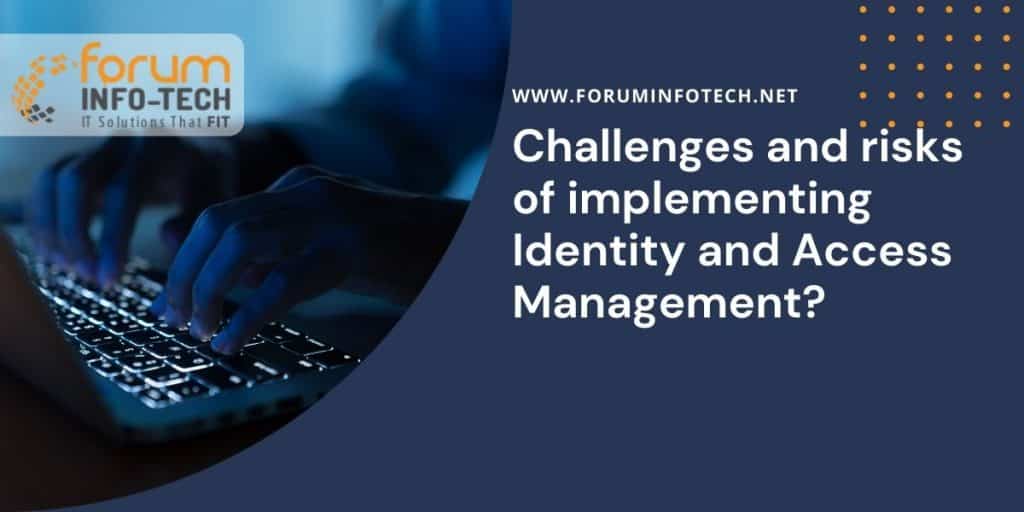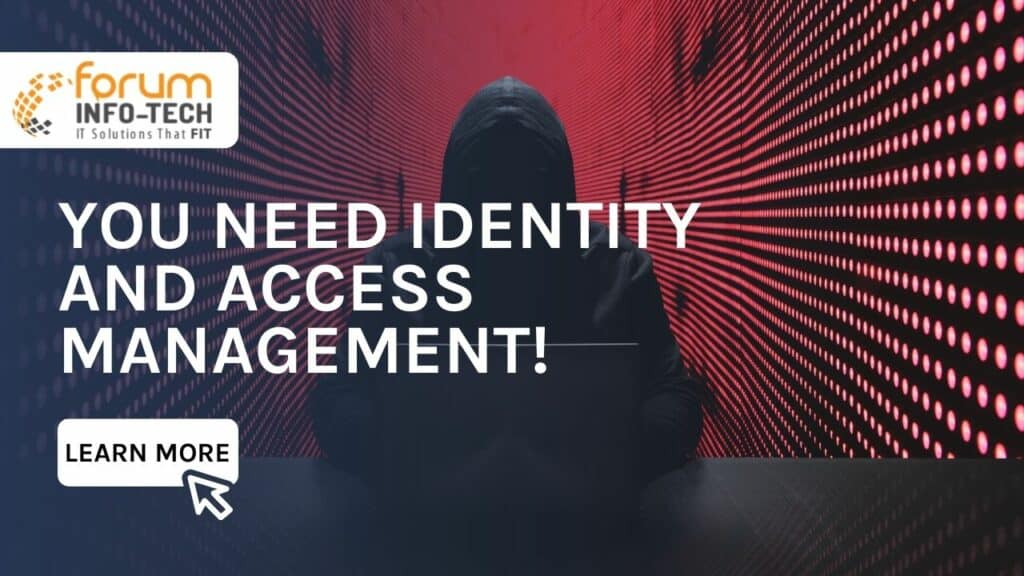Identity and access management makes it possible to manage electronic and digital identities through a framework of policies, technologies, and business proposals. With the help of an identity and access management framework, the information technology (IT) executives can check and control users’ access to important information to their organization’s data.
Multiple technologies such as single sign-on systems, multifactor authentication, and privileged access management can enhance identity and profile information and data governance functions, making sure that only relevant and necessary information is shared.
How Does Identity and Access Management Work?

The first step in a usual identity and access management system is storing the information of all the employees in a directory. The next step involves having tools to add, delete, and modify data in the directory. The third step involves having a system in place to regulate and enforce user data. Usually, data is regulated through different authentication methods like digital certificates, passwords, hardware, and smartphone software tokens found on Android and IOS phones. The final step requires having a proper auditing and reporting system.
In today’s complex computing environment, a strong username and passwords are not enough to counter the increased security threats. The most common change that one can see is multifactor authentication. In today’s world, identity and access management include machine learning and artificial intelligence, elements of biometrics, and risk-management authentication for better security.
Why is Identity and Access Management important?

With increased access to personal information available on the internet, business leaders and IT departments are under a lot of pressure to protect the employee and company data. Therefore, using manual methods to track user privileges is not feasible. It takes a lot of time and leaves room for errors. With its ever-increasing features, identity and access management, which include behavior analytics, biometrics, and AI, isn’t just meant for large organizations but also smaller organizations.
Companies that use identity and access management have greater control over what their employees can access, making them less vulnerable to internal and external data breaches. Identity and access management also help firms comply with government policies as they can show them the information is not being misused. Any information needed for auditing can be made easily available.
Identity and Access Management’s role in the organization’s security

Identity and access management play multiple important roles in an organization. But since these roles are spread over multiple departments such as IT, operations managers, development teams, infrastructure, legal departments, etc., identity and access management are not considered critical.
Identity and access management’s role in the organization starts with managing a secure network. They require the company to define which people in an organization can access what kind of information and under what circumstances should they be allowed this access. This feature is very important since many companies overlap rules. They are also outdated, granting extra access to important data to employees who do not need it to do their job.
Identity and access management’s second role requires it to connect it with different parts of the business. For instance, they must connect integration with analytics, customer and partner portals, business intelligence, and marketing solutions. If these connections are not made, identity and access management become irrelevant very quickly. Next, identity and access management also protects user data and protects them from non-human entities such as APIs, application keys, agents, and containers.
The final role of identity and access management in an organization is to roll out adaptive authentication and Multi-Factor Authentication to all the employees and have an evolving authorization model that allows safe access since employees will have to go through a much harder security check before getting access. Adaptive access is just the start to better authentication methods since most identity and access management products do not have fraud detection, which is a requirement since account takeover attacks have become more sophisticated.
Open Standards

In identity and access management, there are multiple Open Standards to track and leverage. But the important part is how organizations use these standards effectively and efficiently to manage access. For instance, open standard identity protocols such as Web Services Trust, OpenID, WS-Federation, and OAuth, give access to user information to apps like Facebook and other third-party applications without exposing customers’ passwords.
Change in identity standards in 2013 was considered one of the biggest changes adopted by multiple identities and access management. Identity and access management eliminated service providers, operating systems, and passwords. Previously, one would do this with the help of biometric techniques, smartphone profiles, and hardware security keys.
Challenges and risks of implementing Identity and Access Management?

Even though identity and access management are present in all the organization’s security stack, it does not cover everything even then. For instance, when access rights are given to new employees, how these rights are given since delegating this to the managers becomes an issue. Identity and access management systems should detect changes in rights when new employees enter the firm, but at times they do not.
When it comes to large firms’ automation, manually changing access privileges can be troublesome when there are thousands of employees. Even though identity and access management products have gotten better at managing workflows and business processes, the complexity of user-boarding has still not gotten easy.
Employees often grant access to applications and add them to the organization’s framework. Still, since we cannot always trust these applications even with a Zero Trust security model, they must be carefully monitored to ensure there are no false-positive opportunities. For this, the organization must monitor each employee as soon as they login into their computers.
The relationship between identity and access management (IAM) and single sign-on (SSO) is really important and needs to be carefully orchestrated. Every company’s goal is to have a single username and password per employee for the applications that the company uses. However, this doesn’t mean that all the applications should be accessible through a single username and password.
IT managers should make identity management with any new application they make. They should carefully choose identity management because it can then be used as a prototype to guide any identity and access management and then can be expanded to other apps across the organization. Identity and access management should also work on grand unification with customer-centric identity and access management as if this does not happen and both the securities work separately, identity and access management will never reach their full potential and play catch-up forever; Okta’s acquisition of AUTHO shows the step in the right direction.
Final thoughts
Identity and access management have evolved over the years. The newer versions, which are rich in features, can adapt to an organization of any size, environment, and structure. Considering how the dynamics of jobs are changing after the COVID-19 pandemic and companies are preferring independent workers over fixed employees. The need for higher security and access management has increased greatly to protect the company from a data breach of any sort. Hence, organizations should have an identity and access management to manage their data access.

